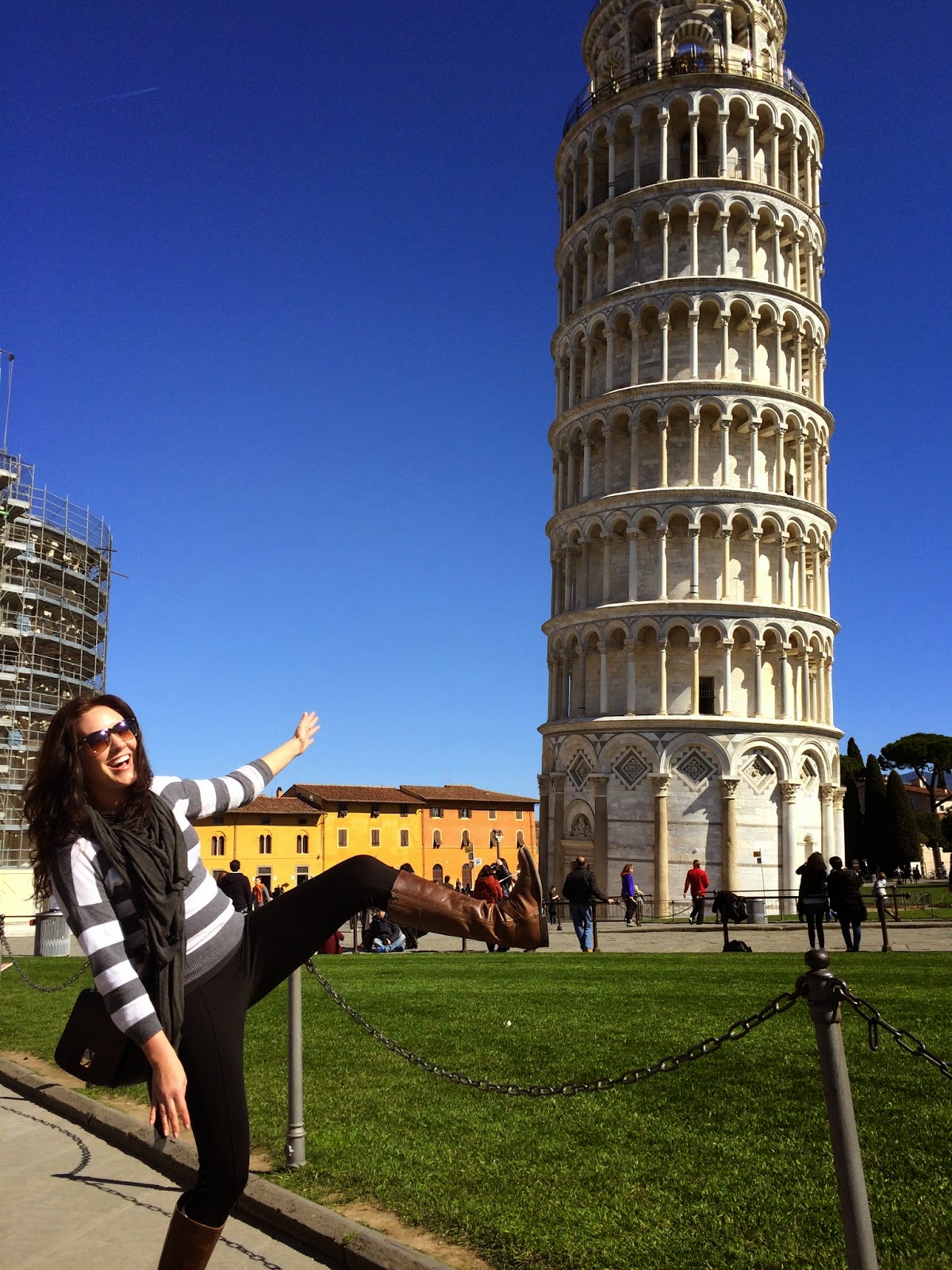Day Two of our Tuscany travels took us to two different cities in one day: Pisa, home of the world famous leaning tower; and Volterra, a tiny mountaintop Etruscan town with views all the way to the sea.
The Leaning Tower of Pisa is in fact only one part of the Campo de Milagros; it is the bell tower attached to the main cathedral and the baptistery across the way. We were really lucky with the weather and the combination of clear blue sky, brilliantly emerald grass, and bright white churches was almost eye-watering.
We remained with our tour group to see the inside of the Cathedral, but opted to break away midway through in order to better explore the area ourselves independently. I liked the alternating black and white striping of the interior as it appeals to my simplistic, colour-blocking aesthetic and the altar was, of course, stunning.
The Leaning Tower itself was smaller and shorter than I expected it to be, and at 16 Euro to get to the top we decided to stay planted. It is quite beautiful though, with its symmetry and patterns in the stone.
Of course, we had to take the classic cheesy tourist photos, which took over an hour to get right and is WAY harder than you think it's going to be!
I'll give you one guess as to who took up the most time:
KANSAS
At any rate, when we were FINALLY done being ridiculous tourists we got a chance to relax in the sunshine at a little cafe, enjoying some of the local specialties (pasta, and a Tuscan Sauvignon that I admit I much preferred to the super dry red we'd had the night before) before being herded back onto the bus to head to Volterra.
During the two hour drive we entertained ourselves playing the group guessing game Head's Up, which I believe was created by Ellen DeGeneres. It was a cheap buy in the App Store and WELL worth it for hours of hilarious entertainment, especially in the "Adults Only" category. When playing, the game actually takes video of everyone and you have the option to save the clip to your camera roll. Suffice to say given the theme we were playing with the video is *not* appropriate to post here, but I burst out laughing every time I rewatch it!
At the end of it we arrived in Volterra. We were repeatedly told that the current claim to fame of this town is that it was mentioned as being the seat of power of the ruling vampire clan The Volturi in the book and movie series Twilight. However, the actual movie wasn't filmed here, so...yeah. We never did clap eyes onto any vampires, but that may have been because the day was so frigid and windy that everyone was huddled up inside, undead bloodsuckers included.
Panoramic view from the entrance to the city; way off in the distance is the sea, visible on clear days.
The town is gorgeously picturesque with its narrow winding stone streets and sunset coloured buildings stacked all on top of one another. The residents clearly pay attention to detail, as well, evidenced by the well tended florals and succulents outside every door and decorating parts of the walls.
The view of the "rolling hills of Tuscany" at your feet is nothing to sneeze at, either.
We wrapped up our visit in Volterra quickly...
(not without stopping for a tiny pastry first!)
For primi piatti (first course) it's always, always pasta: this time, a
duo of mezzaluna pasta (a large, half moon shaped type of ravioli) in a
delectable tomato sauce, and gemelli pasta in a pesto cream sauce.
For secondi piatti (second course) it was chicken cooked to perfection
in a mushroom and ham cream sauce, served alongside steamed spinach.
Dessert was fresh berries piled on top of cream, all encased in a basket that turned out to be made out of chocolate. I think I ate more that evening that the rest of the trip combined.
What better way to burn off all those calories than dancing the night away in one of Florence's night clubs? (Ignore the fact that we earned them all back in drinks, but whatever.) Bamboo was the place, chock full of local Italians (a nice change from the American college crowd we usually run into) with great music and our giant group of 20 people wasted no time in taking over the dance floor until the early morning hours.
Day Three: Siena!
















































